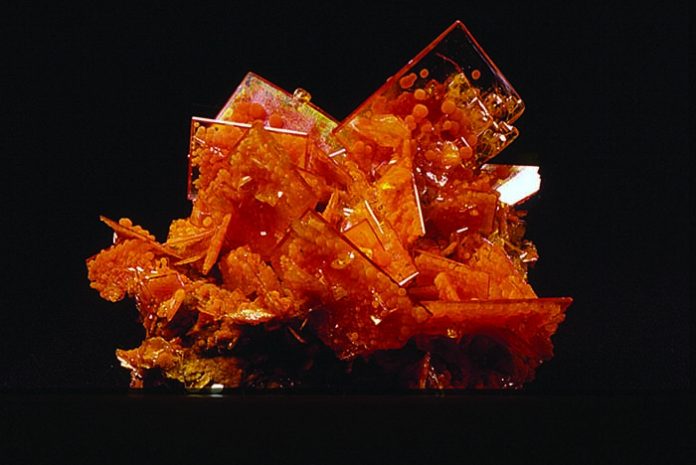
Wulfenite-mimetite specimens from Mexico’s San Francisco mine in Sonora are among the most beautiful in the world.
It’s my favorite and I admit to being prejudiced because I’ve been in the mine and photographed its finest specimens, though I’ve also been in many notable wulfenite mines in the Southwest. In my 80 years of world travels to collect, study, write, and lecture about minerals, I’ve never seen any mineral species combination that equals the best San Francisco mine wulfenite-mimetite.
Wulfenite Properties
Wulfenite is a common lead mineral found as fine collector minerals in dozens of countries. Some of these are beautiful, but they do not equal the best from this old gold mine in Sonora, Mexico. These beautiful specimens’ color is the best Mother Nature can achieve, ranging from choice yellow to absolutely stunning orange and red. If you could create a wulfenite and mimetite specimen, you could not exceed what nature has done at the San Francisco mine.
Arizona and Mexico are noted for fine wulfenite. There are over 100 mines with this lead molybdate within 150 miles of Tucson, including some of the world’s best known: Red Cloud, Defiance, Glove, and Rowley in Arizona and Los Lamentos, Mexico. In spite of the fine wulfenite these mines produce, they don’t come close to matching the best from the San Francisco mine, Cucurpe, Sonora, Mexico, in my opinion.
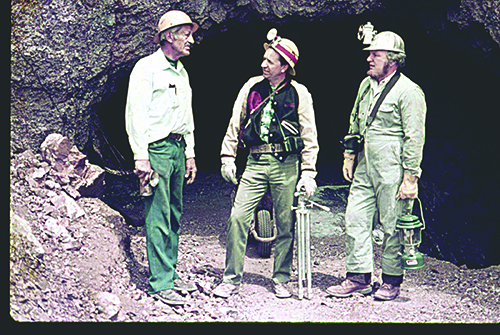
Wulfenite-Mimetite Wonders at San Francisco Mine
Be that as it may, in 1973, the San Francisco mine, near Magdelena, Mexico, produced many hundreds of specimens that have to rank as the world’s most beautiful wulfenite-mimetite specimens. Thanks to specimen mining efforts, these amazing specimens were joined by tens of thousands of excellent wulfenite specimens produced here.
The San Francisco mine was originally opened in the late 1800s as a gold mine and continued producing gold, silver, and eventually molybdenum until 1912. Sporadic mining followed, but it was not until the 1970s that specimen mining produced the finest wulfenite-mimetite specimens ever. These wulfenite specimens began to show up at the Tucson Gem and Mineral Show then, and a good friend of mine, Wayne Thompson, whom I’ve known since he joined the Mineralogical Society of Arizona as a pre-teen, investigated the mine. That’s when some of the best specimens began to appear and was the reason the mine became world-famous.
This first outstanding find stirred the entire collecting community, and further mining efforts, under contract, were made to investigate and mine wulfenite deposits in this old gold mine. Miners had to develop an incline and tunnels at depth in their search to find and mine crystal pockets. Some of these specimen searches were successful, leading to tens of thousands of fine specimens coming to grass.
Wulfenite-Mimetite @ San Francisco
The big question in all this is what makes San Francisco wulfenite-mimetite the world’s best for the species? In several articles written by people more worldly than I, information recognized San Francisco’s wulfenite as best for the species. What makes these Mexican specimens so amazing is more than one feature. The combination of two well-crystallized species and outstanding color are two important factors.
When you combine two different well-crystallized species, each boasting brilliant colors, the result is breathtaking. Consider the blue and green of azurite-malachite, very attractive and eye appealing. But they pale when compared to the intense orange-red color of Mexican wulfenite-mimetite.
Range of Color
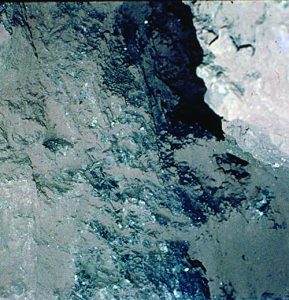
San Francisco wulfenite ranges in color from a normal brown-yellow to bright yellow to brilliant orange. One superb pocket of bright yellow wulfenite was mined specifically for the Arizona Sonora Desert Museum. The Museum incorporated the pocket of wulfenite in its faux-mine display, which resides in the Congdon Earth Science Center. The mine tunnel housed various crystal pockets featuring vanadinite, malachite, and even a selenite cave dug and arranged by Benny Fenn.
Wulfenite’s companion mineral mimetite is seen in colors from bright orange to dark red to “fire engine” red. Unlike wulfenite, which developed in wafer-thin tabular crystals, mimetite developed as small red spherules measuring a few millimeters across. These spherules formed individually in small, inter-growing clusters and tight sheets in and on wulfenite crystals. Intriguing are the red mimetite spherules perched on the edges of large orange wulfenite blades. The combination of bright orange transparent wulfenite tabular crystals generously decorated and even infused with small bright orange to red mimetite spherules is spectacular. In clusters of wulfenite blades, the mineral seems to be suspended in narrow spaces.
A Breathtaking Combo
The San Francisco specimens are highly regarded because each species alone is spectacular. Combined; they create a spectacular species. Wulfenite is a lead molybdate, and mimetite is a lead arsenate chloride, so these species develop in the same environment under very similar circumstances, and crystals can even develop simultaneously.
The sequence of crystal formation for these two species varied within the solution environment. In some cases, mimetite formed first, followed by wulfenite. In other examples, the reverse happened. Even more appealing and most often in the majority of the better specimens, the two species were developing crystals at the same time. During formation, the wulfenite specimens were seen to penetrate, interlock, or engulf mimetite spherules of the red-orange form, half in and half out the wulfenite prism faces. This alone makes these specimens attractive and exceptional.
Mimetite Properties
As mentioned earlier, the mimetite spherules are never large, while the wulfenite ranges from well under an inch to an amazing five inches across. The majority of the wulfenite crystals are typical tabular squares, paper-thin and modified on the edges. I can recall a single crystal about five inches on edge, paper-thin, good orange color with only minor mimetite on it. Unfortunately, it was probably slightly stressed and not an unusual circumstance in any crystal. This striking specimen was on display at the Tucson Gem and Mineral Show one year, but when removed from a display case at closing time and placed on someone’s hand, the crystal instantly cracked and broke into small pieces, a terrible reminder of how all crystals can be affected by a changing environment.
Wulfenite-Mimetite Combinations
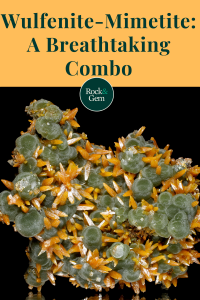
When the best of San Francisco’s wulfenite mimetite combinations were being mined and sold, I was teaching school. I had a family, and my collecting centered mainly on lead minerals from Arizona and Mexico. So I was very excited when asked to help with an anticipated find of a wulfenite pocket at the mine. Museum Curator Bill Panczner was developing the faux min tunnel in the Congdon Center. He had made an agreement with mineral wholesaler Suzie Davis, who was financing specimen miner Jose Kovrig as he searched for wulfenite at the mine. The agreement was Jose would let Suzie know when he hit a pocket. In turn, she would call Bill Pacnzner at the Museum, and photographer Jeff Kurtzeman and I would go to the mine and photograph the pocket in place and the removal of the newly discovered wulfenite pocket.
Sure enough, we got the call when we happened to be at the Museum, so Jeff and I headed to Phoenix to grab our materials and cameras.
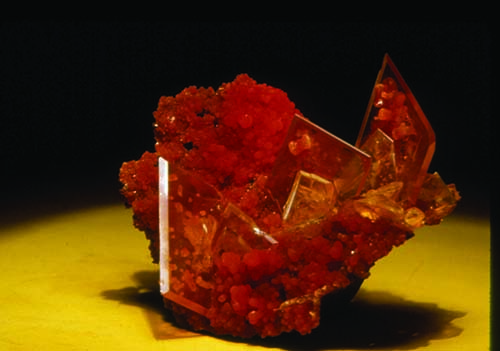
Mesmerized by Minerals
Naturally, I had dreams of taking photos of amazing wulfenite and mimetite pockets and even hoped I might be able to afford a small beauty. When we met Jose, the five of us headed out to the mine, and Jose escorted us underground. When we got deep in the mine, we entered a huge open slope, and Jose pointed to the far wall where we could see a big open seam. In the dim light, we couldn’t see much, but a closer look was really disappointing. The seam was certainly lined with wulfenite crystals on both walls, which extended up as far as our lights went. The problem was the wulfenite crystals: up to an inch or so were a dark brownish-yellow, and most were heavily coated with dark material. They were hardly suitable for a Museum wulfenite pocket display. We knew immediately the pocket was not what we wanted.
While we were discussing all this, Evan had pulled out his collecting tools, knelt in front of the wide-open pocket, and hitched himself directly into the open seam so wulfenite was all around him. He collected a couple of specimens, and we headed home. The Museum went without a wulfenite pocket until the later discovery of the bright yellow wulfenite crystals described earlier. Today, you can enjoy that pocket during a visit to the Museum.
Availability of Minerals Today
As for the availability of San Francisco wulfenite today, the mine is dormant. I doubt more wulfenite will be found because earlier mining had been very vigorous and widespread. It is now pretty much agreed it would be too costly to continue searching. The pockets discovered were more or less at about 1,000 to 1,100-foot level in the mine. The last good find was wulfenite with white barite crystal clusters, and it was found at and just below the water level. It would take a huge expense of pumping in hopes of finding something, which is unlikely.
Fortunately, an occasional specimen of quality emerges from a private collection for sale. So, if you are serious about owning the world’s finest wulfenite-mimetite, be sure to let your favorite mineral dealer know you are interested, and maybe you’ll get lucky!
This story about wulfenite-mimetite previously appeared in Rock & Gem magazine. Click here to subscribe! Story by Bob Jones.














